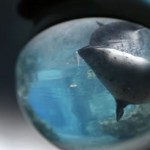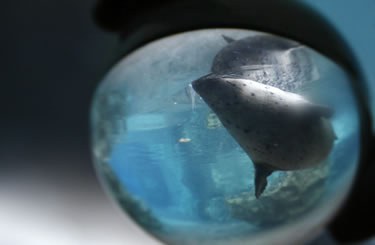
By Dale O’Brien
EVERY ASTROLOGER, and every astrology student, should consider what is truly important to include in any chart for astrological interpretation. Sadly, most give no thought to the matter at all, including and excluding chart components based on one’s initial exposure to astrology, and later, merely on thoughtless habit. The astrology charts of old had limited components: the Sun, the Moon, and the planets visible to the naked eye, plus the lunar nodes.
Interestingly enough, European and Indian astrology used to be seen as only “for” kings and then later “for” kings plus certain V.I.P. types — socially powerful people with significant name recognition and high social visibility. “Little” people didn’t matter, as if their little known names and relative obscurity made them irrelevant and invalid, the anonymous neutral background around the biggest and brightest.
Not a lot changed in the social/political world, or in astrology until the astronomical discovery of the planet Uranus in the late 18th century. The world, and astrology, would never be the same again. The late, great astrologer Dane Rudhyar pointed out that the astronomical discoveries of Uranus, Neptune and Pluto corresponded to time periods of significant specific changes in human consciousness and collective activity introduced by a small but significant minority of collective humanity at that time in history of what we would call the “modern” world. Ruhyar also anticipated the discovery of a significant astronomical object between the orbits of Saturn and Uranus. This was, of course, where astronomical Chiron was discovered November 1, 1977.
Not only was what Rudhyar brought to our astrological attention relevant to those significant new components for any astrological chart, they contain guiding principles for inclusion of new chart components and their potential relevant personal and collective significance.
First, the astrological recognition and inclusion of Uranus tells us that INNOVATION is now and forever a part of our individual and collective lives. As such, should be a part of our astrology. Relevant innovation in astrological components can make astrology relevant to our ever-changing times.
Second, approximately (within perhaps fifteen years, plus or minus) certain personal/social issues/insights are likely to have come into greater awareness relevant to the nature of the new astrological component.
Third, Chiron’s mythical/astrological nature can be relevant to the issue of acceptance or rejection of each and all-new astrological components. Chiron was the bastard son of Chronos (that’s Greek for the Roman Saturn) who ate his children when he could, because his power and dominion was threatened by their very existence. Saturn is associated with tradition. Within astrology, Saturn is the part of us that wants to deny new potential components of the astrological chart. For instance, here is a true, regrettable story.
Years ago, an internationally known male astrologer was invited to speak to a local astrological organization. Before he began his presentation, he erased Chiron, Juno, Vesta, Ceres and Pallas Athena from the chart on the blackboard. He smiled and said that he felt much better now that the useless junk (or words to that effect) were out of the way. Rather than humble himself and admit his ignorance, at that time, to their possible astrological meaning and relevancy, he expressed the power of the large to obliterate the small, like the devouring, judgmental, and paranoid negative expression of Saturn/Chronos. The astrological community is a microcosm of our larger society. None of us are immune from the temptation to be controlling dictators in our own realm.
Similarly, years ago one of the astrological computer programs would not include Chiron and these four asteroids in the circle chart, but rather placed them in a box at the bottom of the page. A friend of mine called their containment in this box a “ghetto.” Just as some individual people and subgroups in society are discriminated against and attempts are made to restrict their power, a similar dynamic exists in the larger astrological community towards innovative chart components. Just as in society some people have absolute intolerance, including racism, sexism, ethnocentrism, etc., others have a wider, but limited tolerance. Just as it would be good to recognize our own social/personal biases even if we are not ready to drop them, so it would be good for each of us to be self-aware of our possible prejudices astrologically as well.
Just as women as a gender and various ethnic minorities develop acceptance based on the accomplishments of their individual members and high-awareness groups, so can individuals and subgroups that advocate for their relevance astrologically mainstream these various new components. Nuclear power, created by Uranium and Plutonium, proves that power of the small. Size does not necessarily matter, nor does prior historical longevity.
Skeptics of Chiron, the asteroids and other potential new components of the astrological chart dismiss the relevance of these “minor” planets in the same way that minor league teams in professional sports are dismissed as completely irrelevant or “practically” irrelevant. Since the visible “major” planets were said to make “the music of spheres,” it seems more relevant to see the “minor” planets as adding nuances and interest to the music of our lives, new notes on the sheet music of our charts. Similarly, the so-called “minor” aspects in astrology deserve inclusion and great respect, like the minor chords in music. As astrologers we can deliberately or thoughtlessly stick to the trite simplicity of an astrology that sounds like the musical equivalent to Chop Sticks, or we can aspire to something more challenging to express, but well worth the effort.
Speaking of the simplest of well-known songs, we’d all do well to listen to the title and the words of “Twinkle, Twinkle, Little Star.” The song’s message is to not overlook the wonder of the smallest, but most curious of Celestial Phenomena. That little star song should surely remind we astrologers not to ignore the potential significance of any seemingly minor astronomical phenomenon.















